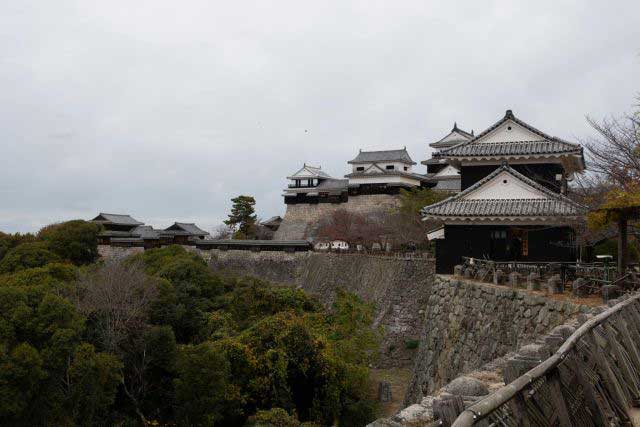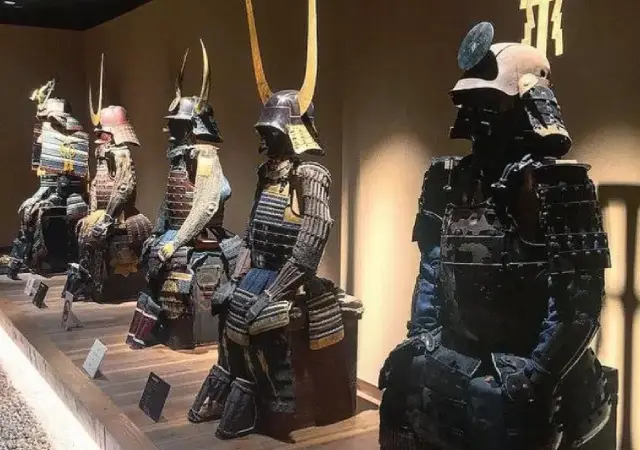
Tsutsui Junkei (March 31, 1549 – September 15, 1584), the son of Tsutsui Junsho, was a daimyo who ruled over Yamato Province. In 1571, through the mediation of Akechi Mitsuhide, Junkei pledged his service to Oda Nobunaga.
Earlier in his career, in 1565, he was defeated by Matsunaga Hisahide, a powerful local warlord, who seized Tsutsui Castle. However, in 1566, Junkei successfully reclaimed the castle after a battle with Hisahide, though he was soon forced to abandon it by order of Nobunaga.
In 1575, Junkei participated in Nobunaga's campaign against the Echizen Ikko-ikki, serving alongside other forces from Yamato under Harada Naomasa. Two years later, in 1577, he joined Oda Nobutada, Akechi Mitsuhide, and Hosokawa Fujitaka in the Siege of Shigisan, where they defeated Hisahide at Mount Shigi.
By 1578, Junkei had been appointed as the daimyo of Yamato and was permitted to construct Koriyama Castle, located in present-day Yamatokoriyama, Nara. He continued to serve in Nobunaga's campaigns, including the Siege of Itami in 1579 against Araki Murashige and the Tensho Iga War in 1581 during the Siege of Hijiyama, against the Iga Sokoku Ikki.
During the Battle of Yamazaki in 1582, Junkei remained neutral, choosing not to align with either side. He famously waited for the outcome at "Hora ga toge," a decision that led to the expression "to sit on Hora ga toge," meaning to remain undecided.
In 1584, during the Komaki Campaign against Tokugawa Ieyasu, Junkei fought on the side of Toyotomi Hideyoshi, who later confirmed his rule over Yamato. However, Junkei died of illness on September 15, 1584. After his death, his cousin and adopted son, Tsutsui Sadatsugu, succeeded him, but the Tsutsui clan soon lost control of Yamato to Toyotomi Hidenaga, Hideyoshi's half-brother. Sadatsugu was later relocated to Iga Province by Hideyoshi's orders.
See also
-
Iyo Matsuyama Castle

Historically, the center of Iyo Province—corresponding to today’s Ehime Prefecture on the island of Shikoku—was the city of Imabari, while the Matsuyama area was regarded as an agricultural hinterland with broad plains and low hills. During the Muromachi period, the central part of the province was governed by the Kano clan from Yuzuki Castle. With the onset of the Sengoku period, however, this clan lost its former influence and was forced to survive in the shadow of the more powerful Mori and Chōsokabe clans. After Toyotomi Hideyoshi’s forces conquered Shikoku in 1587, the northern part of Iyo Province was granted to Fukushima Masanori, one of the so-called “Seven Spears of Shizugatake.” In 1595, Masanori was transferred to Kiyosu Castle, and the lands around Matsuyama were given to another of the Seven Spears, Katō Yoshiaki, who received Masaki Castle and an income of 60,000 koku of rice.
-
Kanazawa Castle

Construction of Kanazawa Castle began in 1580 on the orders of Sakuma Morimasa, a vassal of Oda Nobunaga. The castle was built on the site of the Ikko-ikki sect's Oyama Gobo temple, which is why it is sometimes called Oyama Castle. Morimasa managed to build several moats and begin construction of a castle town. However, after his defeat at the Battle of Shizugatake in 1583, he was executed, and ownership of the castle passed to Maeda Toshiie (1538–1599).
-
Nakatsu Castle

Kuroda Yoshitaka (1546–1604) was one of the closest advisors to the legendary military commander Toyotomi Hideyoshi. He took part in key military campaigns of the late 16th century, including the campaign against Shikoku in 1585 and the campaign against Kyushu in 1587. Later, during the second campaign in Korea, Yoshitaka served as chief advisor to the commander of the invasion forces, Kobayakawa Hideaki. After Hideyoshi's death, he swore allegiance to Tokugawa Ieyasu, thereby securing his influence and patronage under Japan's new leader.
-
Edo Castle

The history of Edo Castle dates back to the Heian period, when the Edo clan built a small fort on this site. In 1457, the vassal of the Uesugi clan, Ota Dokan (1432–1486), constructed a full-scale castle here. Internal conflicts weakened the Uesugi clan, and in 1524, Ota Dokan’s grandson, Ota Yasutaka, surrendered the castle without resistance to the forces of Hojo Soun, the ambitious leader of the Hojo clan. While Odawara Castle remained the clan's main stronghold, Edo was considered a key strategic fortress.
-
Samurai Museum Shinjuku

Situated in the vibrant district of Shinjuku, the museum showcases an extensive collection of samurai armor, weapons, and cultural artifacts spanning from the Kamakura to the Edo period. The exhibits aim to convey the samurai's unwavering commitment to honor and discipline, reflecting how their spirit continues to influence modern Japanese culture.
-
Anjo Castle

Anjo Castle was built on a slight elevation at the edge of the Hekikai Plateau, about 2 kilometers southeast of present-day central Anjo City in Aichi Prefecture. Today, the surrounding area thrives on large-scale agriculture and automotive manufacturing, utilizing the expansive flatlands and its proximity to the Nagoya region.
-
Numata Castle

Numata Castle, located in Numata, northern Gunma Prefecture, Japan, has a rich and complex history. During the late Edo period, it served as the residence of the Toki clan, who ruled the Numata Domain. Over the centuries, the castle changed hands multiple times and was the site of significant battles during the Sengoku period.
-
Iwabitsu Castle

Iwabitsu Castle is a yamashiro-style (mountain) castle located atop Mount Iwabitsu in Higashiagatsuma, Gunma Prefecture, Japan. Recognized for its historical significance, its ruins have been protected as a National Historic Site since 2019.

